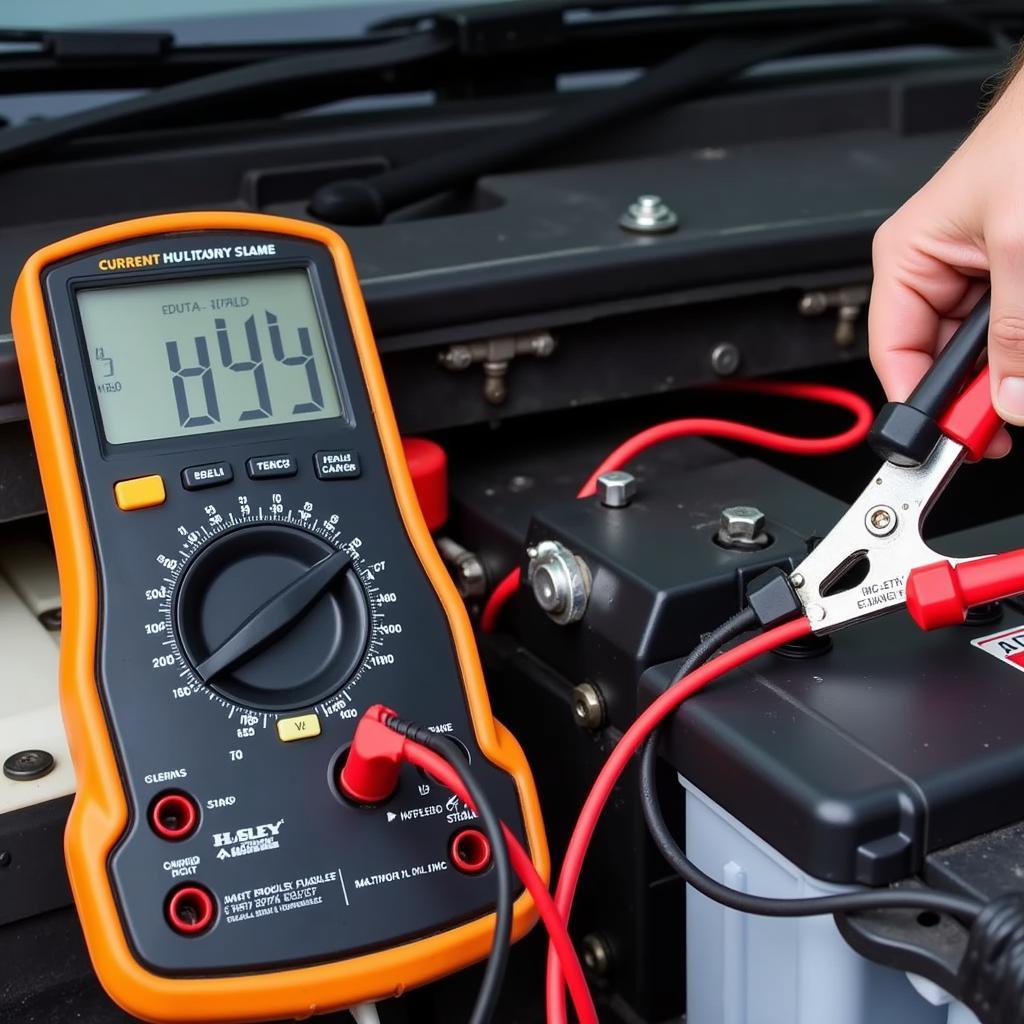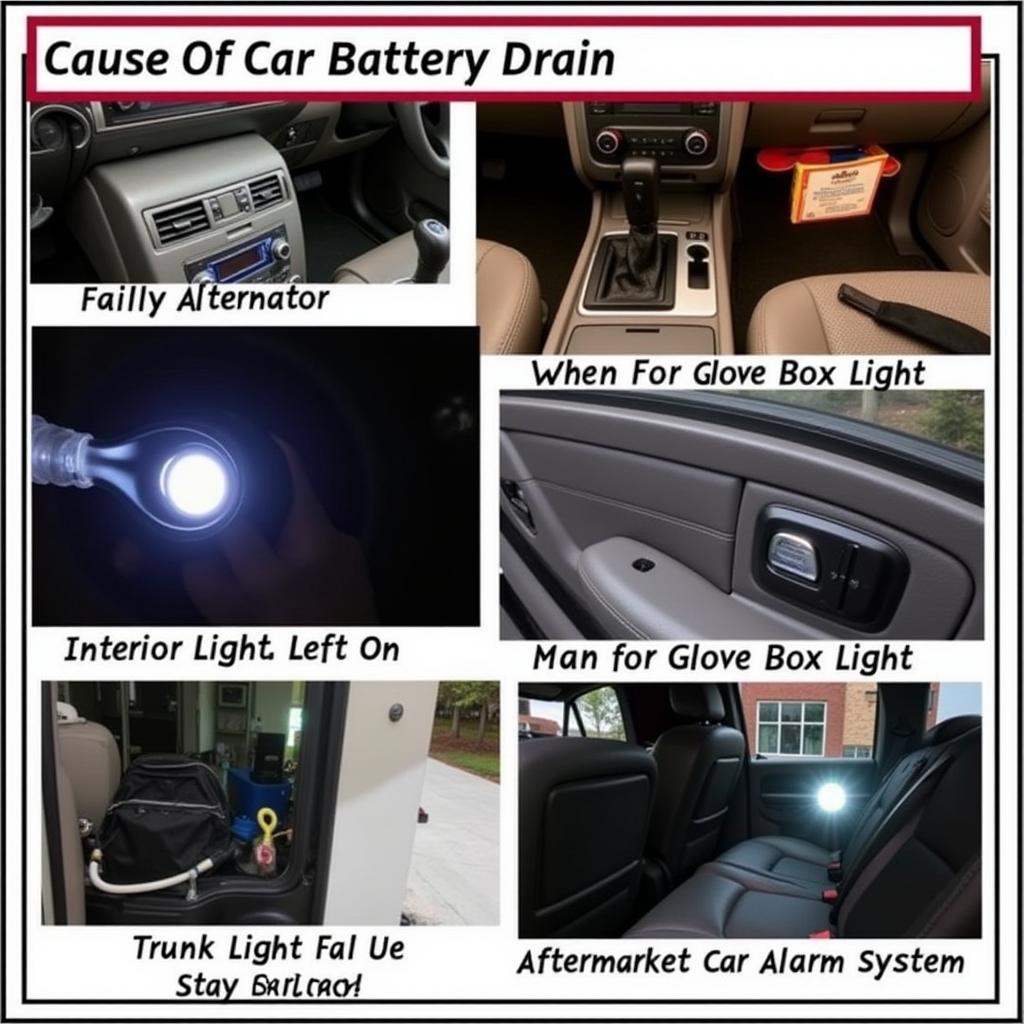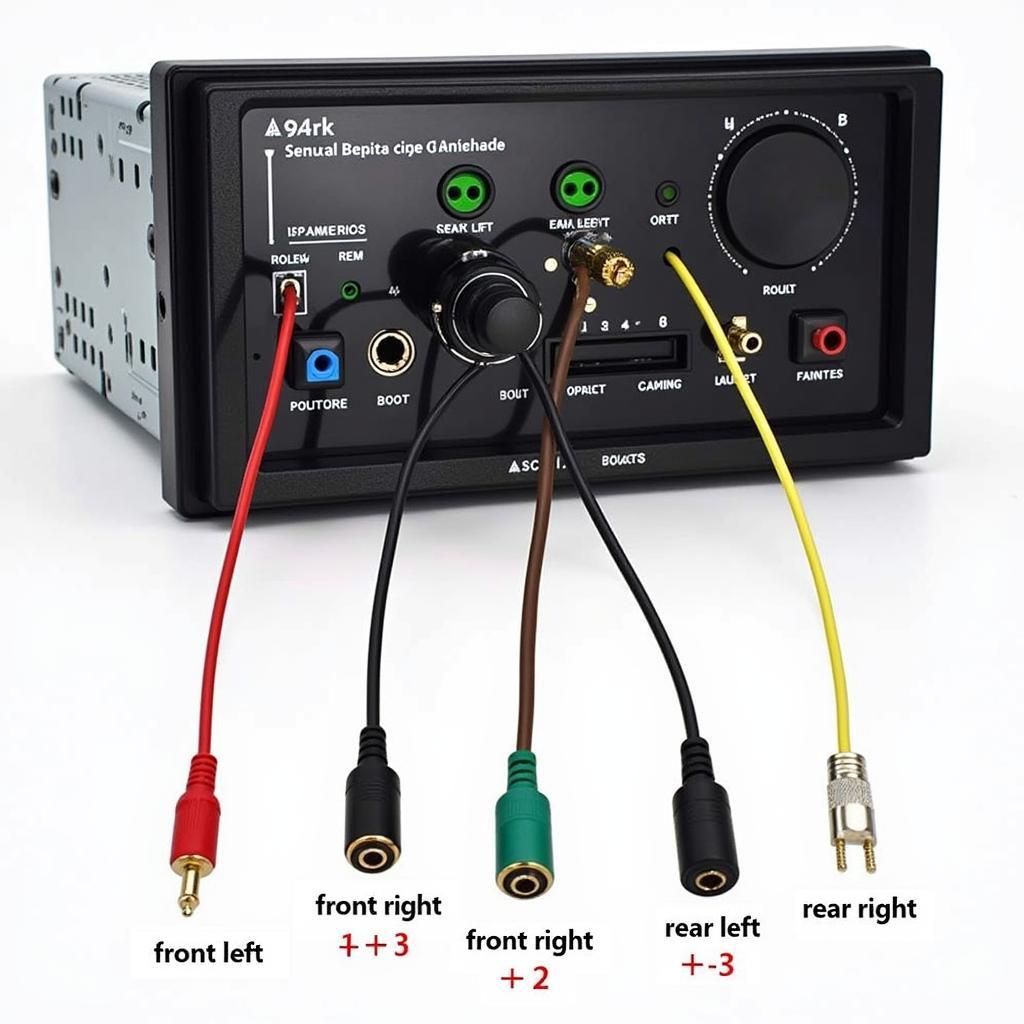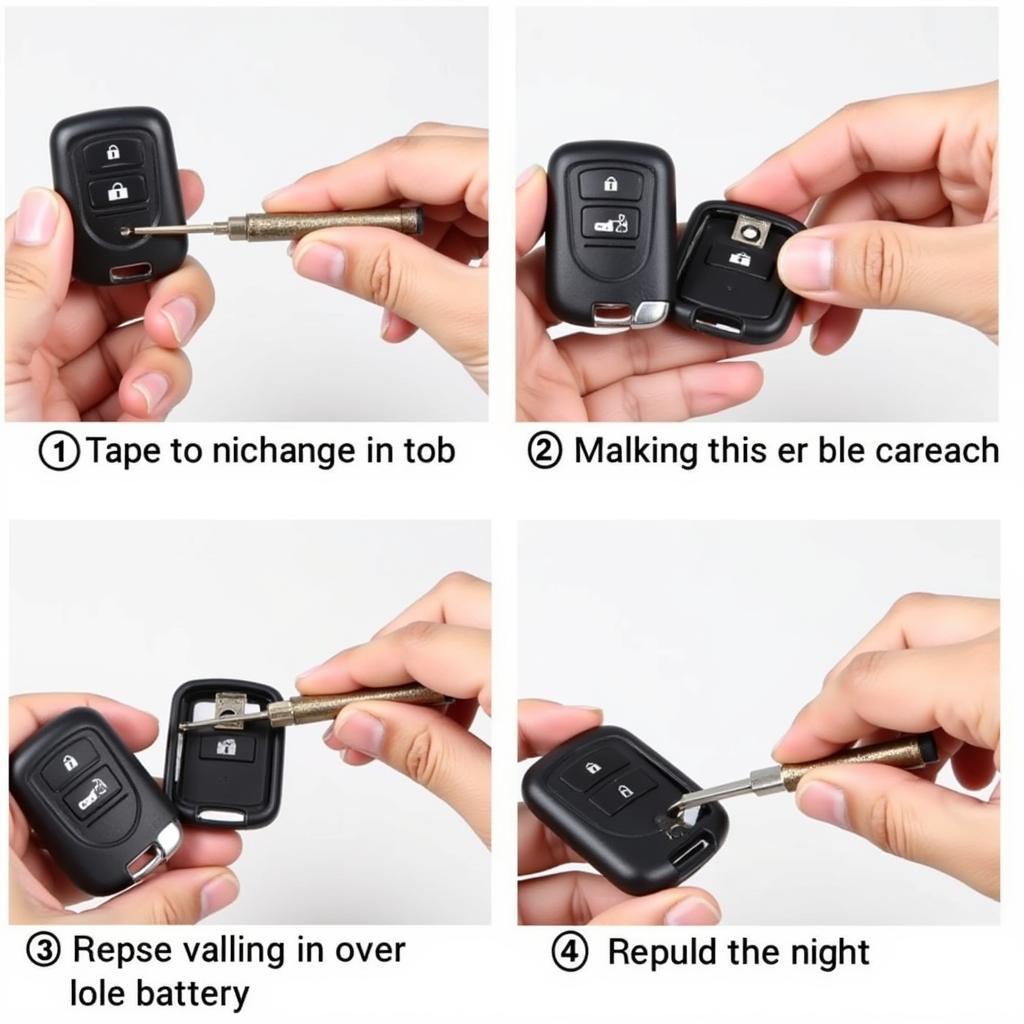A dead car battery is frustrating, but figuring out why it’s constantly draining can be even more so. This guide provides a thorough understanding of how to perform a battery drain check, empowering you to diagnose and potentially fix the issue yourself or at least have an informed conversation with your mechanic. We’ll cover everything from basic checks to more advanced diagnostic techniques, using remote software solutions and programming where applicable.
 Testing Car Battery Drain with Multimeter
Testing Car Battery Drain with Multimeter
Understanding Battery Drain
Why is a battery drain check important? A healthy car battery should hold its charge for weeks, even when the vehicle isn’t in use. If your battery is dying frequently, it’s a clear sign that something is drawing power even when the car is off. This “parasitic draw” can range from a simple interior light left on to a more complex electrical fault. This is where a battery drain check comes in.
What Causes Battery Drain?
Several factors can contribute to excessive battery drain. Common culprits include faulty alternators, interior lights, glove box lights, trunk lights, door switches, and aftermarket accessories like alarms or stereos. More complex issues might involve faulty control modules or wiring problems. Identifying the source is key to a permanent solution.
 Common Car Battery Drain Causes
Common Car Battery Drain Causes
Performing a Battery Drain Check: A Step-by-Step Guide
- Gather your tools: You’ll need a digital multimeter measure battery drain, some basic hand tools, and possibly a wiring diagram for your specific vehicle.
- Prepare your car: Park your car in a safe location, turn off all accessories, and close all doors and windows. Let the car sit undisturbed for at least 30 minutes to allow any modules to go into sleep mode.
- Disconnect the negative battery cable: This isolates the battery from the vehicle’s electrical system.
- Connect the multimeter: Set your multimeter to measure DC amps. Connect the red lead to the negative battery terminal and the black lead to the disconnected negative cable clamp.
- Observe the reading: A small draw (around 50 milliamps) is normal. Anything significantly higher indicates a problem. checking draw on battery is crucial for identifying a problem.
“A simple battery drain test can save you hundreds of dollars in diagnostic fees,” says automotive electrical expert, Michael Davies, P.E. “It’s a fundamental skill every car owner should have.”
Isolating the Culprit
If the multimeter reading indicates excessive draw, start pulling fuses one at a time. Observe the multimeter reading after removing each fuse. A significant drop in the reading indicates that the circuit associated with that fuse is the source of the drain.
Advanced Diagnostics and Remote Solutions
For more complex issues, remote diagnostic software and programming can be incredibly useful. These tools allow technicians to access vehicle data remotely, identify software glitches, and even reprogram modules to fix certain problems. This can be particularly helpful for intermittent drain issues that are difficult to replicate in a traditional shop setting. increased battery discharge mini cooper can be easily diagnosed remotely these days.
“Remote diagnostics are revolutionizing the automotive repair industry,” notes Dr. Sarah Chen, a leading researcher in automotive software. “They allow for faster, more efficient troubleshooting and often eliminate the need for costly and time-consuming physical inspections.” These remote solutions can even identify issues related to a mini cooper battery discharge warning.
What if I have a new battery and alternator and my car still won’t start?
Even with a new battery and alternator, a parasitic drain can still prevent your car from starting. new battery new alternator still wont start can be a confusing situation, but a parasitic draw test will clarify whether or not this is the issue. If you’ve ruled out a parasitic draw, you might be facing deeper electrical issues requiring a professional inspection.
In conclusion, performing a battery drain check is a critical step in troubleshooting car battery issues. By following the steps outlined in this guide, you can identify the source of the drain and take appropriate action. Whether it’s a simple fix or requires more advanced diagnostics, understanding the process puts you in control of your car’s electrical health. Don’t let a dead battery ruin your day; perform a battery drain check and keep your car running smoothly.



